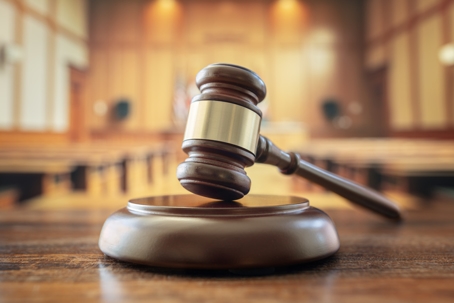Common Trial Court Errors and How They Affect Evidence
Legal proceedings hinge on evidence. That’s why errors in handling or admitting evidence can derail an entire trial. These mistakes often stem from misinterpreting rules, procedural slip-ups, or constitutional violations. For anyone involved in a trial, understanding these common pitfalls is essential. At Branstad & Olson, we’re here to highlight these issues so you know how to protect your case.
Misunderstanding Evidence Rules
The Basics of Admissibility
Evidence isn’t just about presenting facts. It needs to meet specific legal criteria to be admissible in court. Rules around hearsay, relevance, and admissibility often trip people up. For instance, hearsay (statements made outside of court) is generally excluded unless it meets certain exceptions. Similarly, relevance means the evidence must directly pertain to the case, without being overly prejudicial. These might sound straightforward, but their gray areas frequently lead to errors that can sway a case.
Precedent Misapplied
Judges rely on precedents (past case rulings) to make decisions, but errors in interpreting these rulings can cause significant problems. For example, a judge may misapply a precedent due to pressure to expedite proceedings. Such missteps not only impact the case at hand but could influence future rulings as well. To prevent these mistakes, continual education and a strong grasp of legal history are critical for the bench.
Mishandling Expert Testimonies
Vetting the Experts
Expert witnesses play a significant role in many trials, but one common issue is the failure to properly vet their qualifications. An unqualified or unreliable expert witness can undermine a case entirely. Proper review of their education, experience, and relevance to the matter ensures the court isn’t swayed by testimony lacking credibility.
Daubert Standard Issues
The Daubert standard ensures expert testimony meets rigorous scientific criteria, such as being testable and reviewed by peers. Unfortunately, courts sometimes fail to apply these standards properly. The result? Testimony that lacks reliability but still influences judgments. Legal professionals must recognize and challenge improper expert evidence to maintain trial fairness.
Procedural Slip-Ups
Chain of Custody Problems
When handling physical evidence, maintaining its integrity through proper chain of custody is crucial. Every transfer of the evidence must be documented, from collection to presentation in court. Errors or gaps in this process can lead to accusations of tampering or mishandling, often making evidence inadmissible. For example, losing track of a critical piece of forensic evidence might dismiss a valid claim without its support.
Voir Dire of Evidence
Before evidence is admitted in court, it goes through a preliminary process to determine its suitability. Mistakes during voir dire (the questioning phase) can lead to valuable evidence being excluded or irrelevant information being considered. Proper preparation and adherence to procedure are key to avoiding such costly mistakes.
Constitutional Challenges
Search and Seizure Errors
The Fourth Amendment protects against unlawful searches and seizures. If law enforcement collects evidence without a proper warrant or probable cause, it’s likely to be excluded as “fruit of the poisonous tree.” Missteps in upholding these protections not only weaken the prosecution’s case but also jeopardize the fundamental fairness of the trial.
Self-Incrimination Violations
The Fifth Amendment ensures no one is compelled to testify against themselves. If authorities fail to inform a defendant of their rights or pressure them into self-incriminatory statements, it can lead to constitutional violations. Courts must be vigilant in safeguarding these rights to preserve justice.
Improving the Legal Process
Ongoing Education
Training is essential for judges and legal professionals to stay updated on ever-evolving rules and standards. Regular workshops and seminars can mitigate errors stemming from outdated practices or misunderstandings. Continuous learning is not just beneficial; it’s necessary to maintain the justice system's integrity.
Setting Clear Evidence Protocols
Standardized rules for handling and evaluating evidence also reduce the risk of errors. Clear, consistent protocols can prevent mishaps at every stage, from collection to courtroom presentation. These measures promote fair and transparent trials, fostering confidence in legal outcomes.
Protect Your Rights with Branstad & Olson
Understanding common court errors is just the first step in safeguarding your case. Whether you're defending against rights violations or facing challenges surrounding evidence, having the right legal support makes all the difference. At Branstad & Olson, we specialize in navigating these complexities and fighting for your fair treatment under the law.
Call (515) 329-3100 now to speak with experienced attorneys ready to defend your interests.

